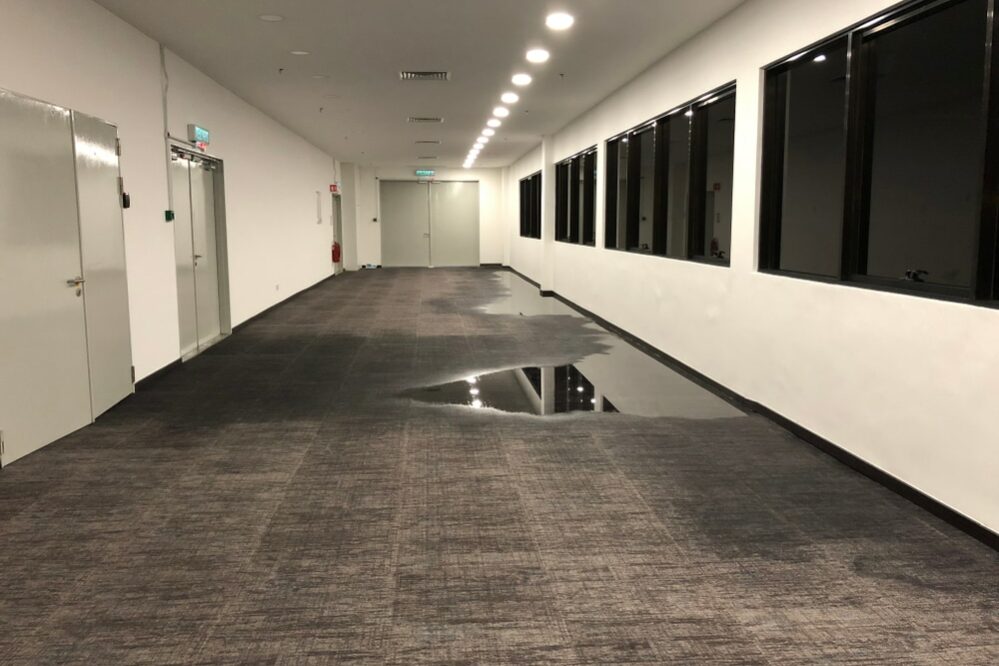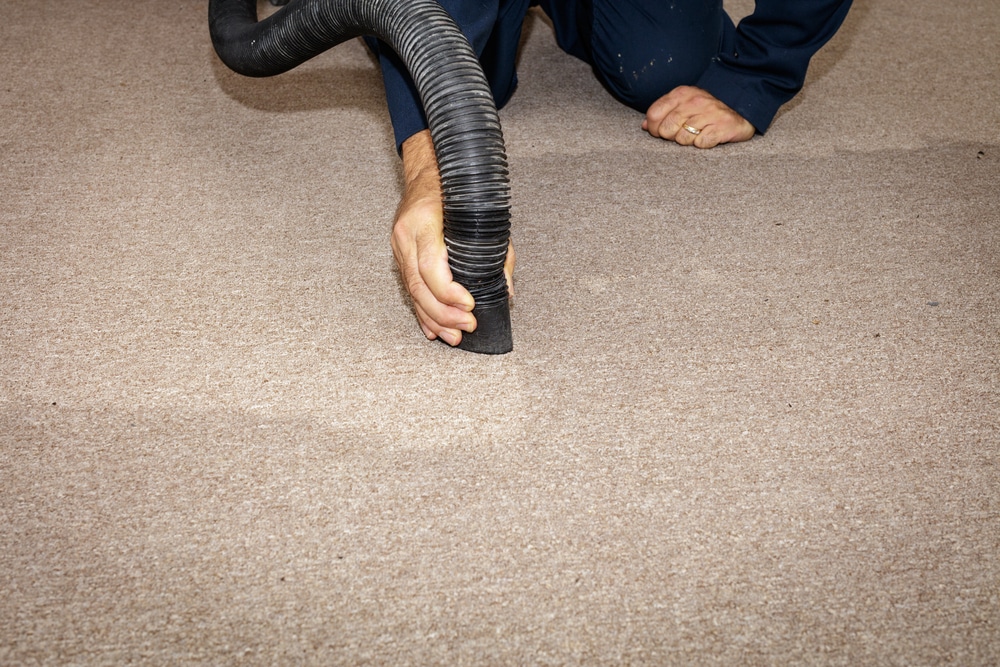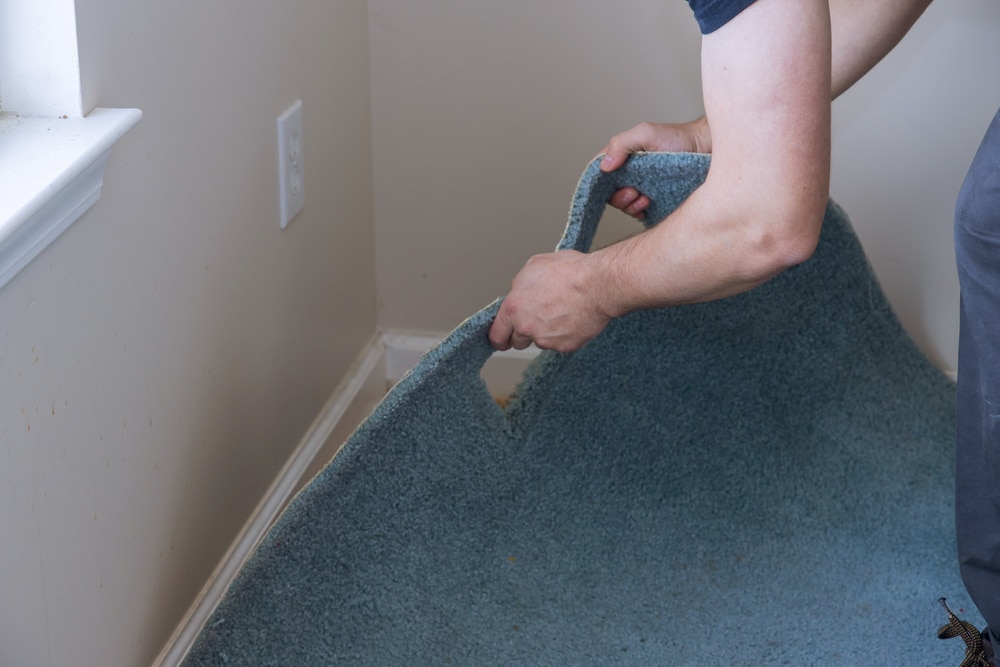Whether it was caused by a roof leak or an overflowing toilet, water damage is never fun to deal with—especially when it affects your carpet. Your main goal as a homeowner is to fix the problem quickly so you can avoid replacing your existing carpet.
When you need a professional carpet cleaning, look no further than Cleanup & Total Restoration. Backed by licensed technicians and a 60-minute response time guarantee, you can count on us to get the job done without making you wait.
Table of Contents
Should You Replace Your Carpet If It’s Been Water Damaged?
In many water damage cases, we recommend replacing your carpet completely. That’s because water-damaged carpet can lead to various other issues, like structural damage and respiratory problems. Here are four scenarios where it’s better to replace than try to restore.
1. The Damage Is Significant
Unfortunately, some water damage is so severe that a simple cleaning won’t restore your carpet to its original condition. The water damages not only the carpet itself but also the padding, flooring, and subflooring beneath it. That’s when a replacement is needed. Our team will replace the damaged carpet with brand-new carpet for a cleaner, healthier home.
2. Mold and Mildew Have Grown
When water makes contact with your carpet, it quickly seeps deep into the fibers. When water damage is left untreated for more than 24 hours, mold and mildew begin to grow. Once these fungal growths have made a home in your carpet, there’s no turning back. Only a replacement will make things right.
3. The Water Was Contaminated
Sometimes, it’s less a matter of how much water damage has occurred and more a matter of what kind of water damage occurred. If your carpet was damaged by flood water or sewage backup, a replacement is the only option.
4. Your Carpet Is Old and in Poor Condition
If your carpet has seen better days—despite the water damage—it’s probably not worth spending time and money to restore it. This is a great excuse to get the new carpet you’ve wanted for years but haven’t had a reason to purchase until now.
How to Extract Water From Your Carpet
Thankfully, some water damage can be restored with a thorough cleaning. The methods required for cleaning carpet that has been water damaged vary slightly depending on whether the water is clean or contaminated.
Clean Water
- Extract the water: Remove everything from your carpet, and let the professionals at Cleanup & Total Restoration extract the water from your home.
- Dry the carpet: Allow the carpet time to dry. Turn on fans and open doors to promote air circulation and accelerate the drying process.
- Replace the padding: If the padding directly beneath your carpet isn’t salvageable, you’ll need to replace it to prevent further damage.
Sewage Outflow (Contaminated Water)
- Get help: First things first, call Cleanup & Total Restoration to clean carpet that has been damaged by sewage backup. Bacteria and other contaminants in the water can be harmful if not treated using the right techniques and safety gear.
- Respiratory problems: Whether it’s aggravated allergies or overactive asthma symptoms, any kind of respiratory problem is a sure sign of mold growth.
- Discoloration: When water sits on your carpet—especially if the water is contaminated—it causes discoloration.
How Quickly Does Mold Grow in Carpets?
Mold, mildew, and bacteria begin to grow in as little as 24 hours
Health Consequences for Carpet Water Damage
When it comes to water damage, protecting your health should be the top priority. That’s why prompt water damage restoration is essential. Here are some symptoms you may experience if wet carpet is left untreated.
- Stuffy nose
- Wheezing
- Red or itchy eyes or skin
- Asthma attack
- Fever
- Shortness of breath
The longer the exposure, the more severe symptoms are likely to become. Additionally, those with allergies and existing respiratory problems, like asthma, are at the greatest risk of developing symptoms.
How To Dry Carpet With Water Damage
The best way to prevent permanent water damage is to dry the carpet quickly. You can do this with:
- Fans: Whether you have box fans, ceiling fans, or both, turn them on full blast to dry up your water-logged carpet. We have large industrial fans that are designed for drying water-damaged carpet, so don’t hesitate to call us.
- A dehumidifier: A dehumidifier is an electrical device that captures excess moisture in the air to balance the indoor humidity level. Reducing moisture content in the air accelerates the drying process.
- Open windows: When in doubt, open your doors and windows. Natural airflow from the great outdoors can help your carpet dry faster.
Read More: 7 Steps on How to Dry Wet Carpet After a Flood
Your Local Water Damage Restoration Company Since 1995
When a water disaster strikes, Cleanup & Total Restoration has your back with top-notch restoration services. Since water emergencies never arise at convenient times, our team is available 24/7 to provide the services you need when you need them most. Contact us today to get started with a free estimate.










